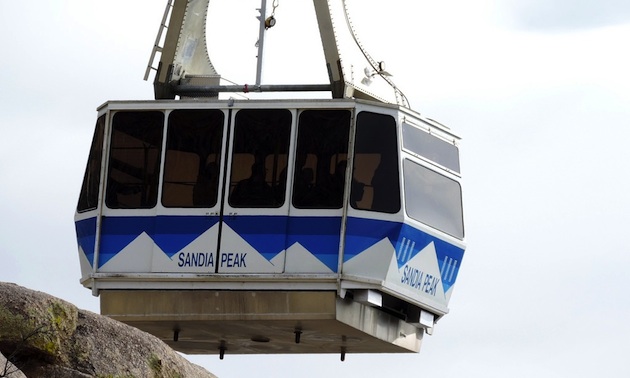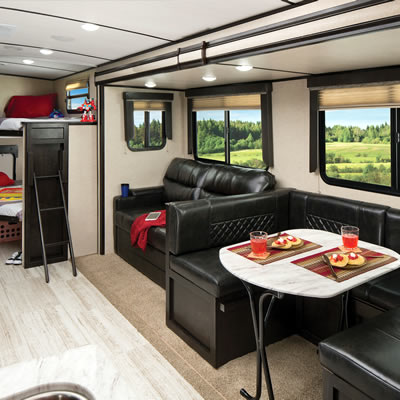Highlights of Albuquerque
The Rio Grande runs through Albuquerque, New Mexico's largest city and a fascinating melting pot of cultures.

Albuquerque, New Mexico, is best known as the Hot Air Balloon Capital of the World, but there is more to this city than hot air. New Mexico is the setting of many films, such as No Country for Old Men, the recent Lone Ranger movie and the award-winning television series Breaking Bad.
Most snowbirds do not venture far into New Mexico, as its major cities are at 5,000 to 7,000 feet in elevation and snow is always a possibility. Albuquerque is the largest city in the state, with interstate highways 40 and 25 intersecting the city. With a metropolitan population of 900,000, Albuquerque straddles the Rio Grande, with the beautiful 10,000 foot Sandia Mountains to the east. The city was named for the Duke of Albuquerque, the viceroy of New Spain.
So what is there to see and do in Albuquerque?
Old Town Plaza (La Placita)
The city was first established in 1706 when 18 farming families settled in the Rio Abajo district of the Rio Grande. The Spanish government under governor Francisco Valdez constructed a military post to protect Spanish territory and inhabitants. The Old Town Plaza or La Placita has been restored, with a central park, adobe buildings, art galleries, small businesses and restaurants, all anchored by the San Felipe de Neri church, completed in 1793.
Only a few blocks from the Old Town Plaza is the Albuquerque Museum of Art and History, the New Mexico Museum of Natural Science and the History and the Explora Science Center and Children’s Museum.
Route 66
The original Route 66 highway went from St. Louis, Missouri, to Santa Monica, California, and was 2,486 miles long. America’s Main Street went through the middle of Albuquerque along Central Avenue, with the main intersection being Fourth and Central. In its heyday the route was lined by motels, gas stations, diners and brightly colored neon signs. Many restored neon signs are displayed along a mile-long strip of Central Avenue, although many of the buildings are long gone. Some of the more famous buildings still standing are Lindy’s Diner, the 66 Diner and the KiMo Theater. Many of these buildings are listed in the National Register of Historic Buildings.
Two festivals glorify the Route 66 past, including Route 66 Summerfest and the Route 66 Car Show and Neon Cruise.
Sandia Peak Tramway
A good way to see Albuquerque and the Rio Grande Valley is to take the tram up Sandia Mountain, which dominates the Albuquerque skyline from anywhere in the city. The aerial tram goes from 6,559 to 10,378 feet, is 2.7 miles long and takes only 15 minutes to reach the summit. It is the world’s longest passenger tramway. At the top is the Four Seasons Visitor Center, a restaurant, shops and trails for hikers and bikers, along with access to the ski hill. The panoramic view from the top consists of 11,000 square miles of desert landscape and the city.
Nob Hill
This is a unique part of Albuquerque and is a residential and commercial district situated at Central and Carlisle on the old Route 66. Land developer DKB Sellers copied the name from an area in San Francisco.
Nob Hill was the first shopping centre in Albuquerque, but is now an eclectic mixture of upscale shopping, bars, trendy restaurants, coffee shops, chic night clubs, art galleries and tourist shops. This fashionable older part of the city and includes the University of New Mexico. There still are many buildings that reflect the Route 66 era, including El Oriente Courts, the Lobo Theater, De Anza Motor Lodge (closed), Monte Vista restaurant and the former Jones Motor Company, now Kelly’s Brew Pub.
Pueblo culture
To understand New Mexico, it is necessary to walk through Pueblo history. There is no better place to start than the Indian Pueblo Cultural Center in Albuquerque. The centre deals with the history, culture and art of the 19 major pueblos of the state. It was the Anasazi or Ancestral Puebloans who left the Four Corners area around 1200 A.D. and settled in the fertile Rio Grande del Norte or “large river of the north.” In order to find the Seven Cities of Cibola (gold), Francisco Vasquez de Coronado in 1540-42 established his headquarters near the Kuaua Pueblo in Bernalillo, just north of Albuquerque. It was here, in a place now called the Coronado State Monument, that the Tiwa people left beautiful painted murals in their kivas.
More pueblo history can be found at the Petroglyph National Monument, 17 miles (27 kilometres) west of Albuquerque. Here the first inhabitants recorded their history up to 3000 years ago with 20,000 glyphs carved into the volcanic rocks of Boca Negra and Rinconada Canyons.
Plan a visit
Albuquerque is a remarkable city and a its melting pot of Hispanic, First Nations and American culture has produced a unique Southwest culture. When this culture is combined with an average of 310 days of sunshine annually, a large variety of ethnic foods, historical sites and diverse shopping, the city is an absolute delight to visit.






